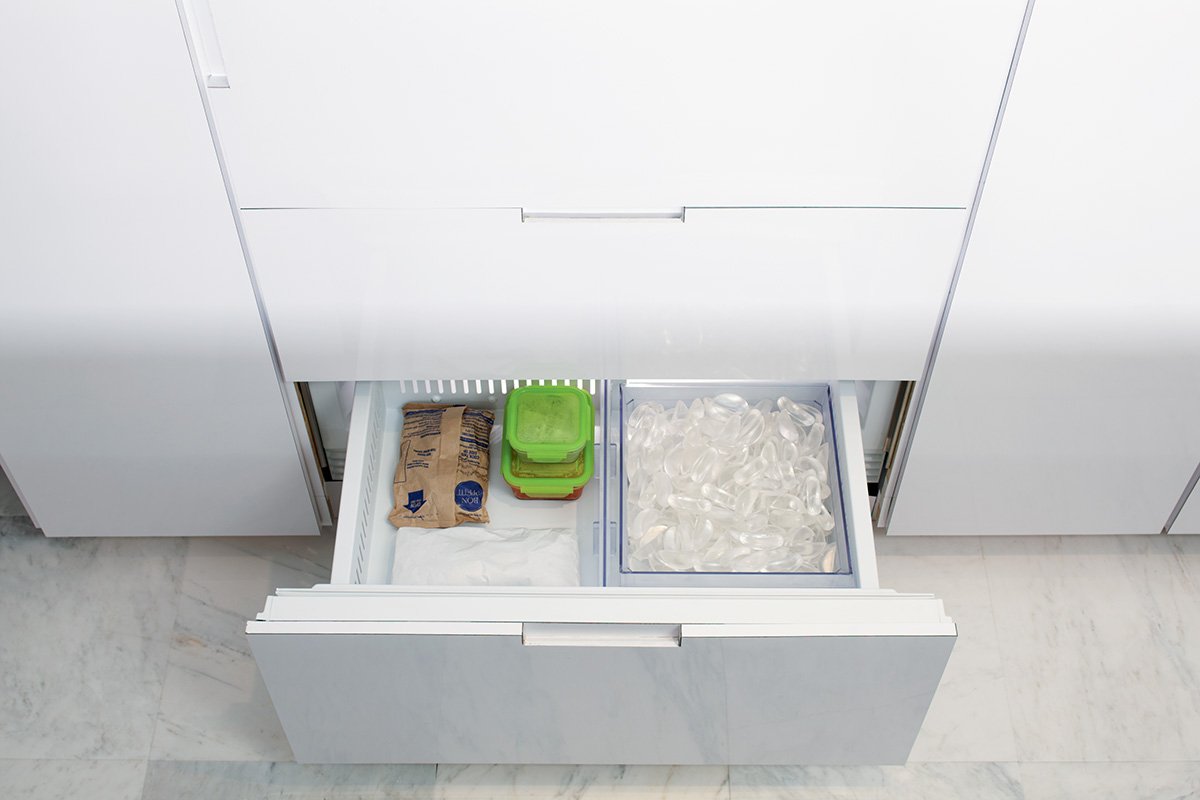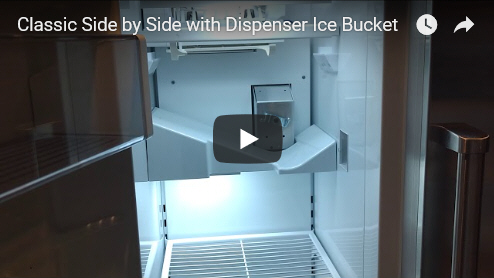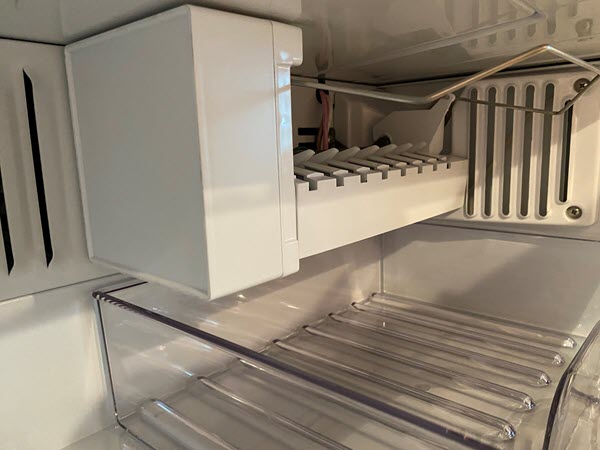
Sub Zero / Wolf
Sub Zero refrigerator troubleshooting ice maker: Check the water supply and ensure it is properly connected. If the water supply is fine, inspect the water inlet valve for any blockage or damage.
A well-functioning ice maker is essential for keeping your Sub Zero refrigerator running smoothly. However, if you’re facing issues with your ice maker, it can be frustrating. One common problem is when your ice maker fails to produce ice. Before reaching out to professional help, there are a couple of troubleshooting steps you can take to diagnose and potentially fix the issue.
In this guide, we will walk you through some troubleshooting tips to help you resolve any ice maker problems with your Sub Zero refrigerator. So, let’s get started and bring back the coolness to your ice-making capabilities.

Credit: samedayappliancerepair.com
Common Issues With Sub Zero Refrigerator
Sub Zero refrigerators are known for their exceptional performance and quality. However, like any other appliance, they may sometimes experience issues that can disrupt their functionality. If you own a Sub Zero refrigerator, it’s important to be aware of common problems that may occur with the ice maker. In this section, we will discuss three common issues you may encounter: Ice Maker Not Producing Ice, Ice Maker Producing Too Much Ice, and Ice Maker Dispenser Not Working. Let’s dive into each of these issues and explore possible troubleshooting solutions.
Ice Maker Not Producing Ice
If your Sub Zero refrigerator’s ice maker is not producing ice, there are several possible causes for this issue. Here are a few troubleshooting steps you can take:
- Check if the ice maker is turned on. Ensure that the ice maker switch is in the “On” position. If not, toggle the switch to turn it on.
- Inspect the water supply line. Make sure that the water supply line is properly connected and the water valve is turned on.
- Check the water filter. A clogged or dirty water filter can hinder the ice-making process. Replace the water filter if necessary.
- Examine the ice maker module. The ice maker module may be faulty and require replacement. Contact a professional technician to diagnose and repair the module if needed.
Ice Maker Producing Too Much Ice
If your Sub Zero refrigerator’s ice maker is producing an excessive amount of ice, it can lead to overflowing or jamming. Here are a few steps you can take to address this issue:
- Inspect the ice maker sensor arm. The sensor arm controls the ice production cycle. Ensure that it is properly aligned and not obstructed. Adjust the sensor arm if necessary.
- Check the ice maker module. A malfunctioning module can cause the ice maker to produce too much ice. Contact a professional technician to diagnose and repair the module.
- Verify the ice bin’s condition. If the ice bin is damaged, it may cause ice to overflow. Replace the ice bin if needed.
Ice Maker Dispenser Not Working
If your Sub Zero refrigerator’s ice maker dispenser is not working, you won’t be able to dispense ice through the dispenser. Follow these troubleshooting steps:
- Check for ice blockage. Ice can sometimes accumulate inside the dispenser, causing it to clog. Remove any ice buildup or obstructions.
- Inspect the dispenser motor. The motor may be faulty and need replacement. Consult a professional technician for assistance with diagnosing and repairing the motor.
- Examine the dispenser switch. If the switch is malfunctioning, it may not activate the ice dispenser. Contact a professional technician to test and replace the switch if necessary.
Troubleshooting Steps For Ice Maker Issues
Having trouble with your Sub Zero refrigerator’s ice maker? Don’t worry! We’ve got you covered with some simple troubleshooting steps to help you fix the issue.
Check The Water Supply
When it comes to troubleshooting ice maker issues in your Sub Zero refrigerator, the first step is to check the water supply. A lack of water can prevent the ice maker from functioning properly. Here’s what you need to do:
- Inspect the water line for any kinks or leaks. Make sure it is properly connected to both the refrigerator and the water supply.
- Ensure that the water supply valve is fully open. If it is partially closed or completely shut off, the ice maker won’t receive an adequate water supply.
- Check the water pressure. Ideally, it should be between 20 and 120 psi (pounds per square inch). Low water pressure can affect the ice maker’s performance. If the pressure is too low, you may need to contact a plumber to address the issue.
Inspect The Water Inlet Valve
Another common cause of ice maker issues is a faulty water inlet valve. This valve controls the flow of water into the ice maker. Follow these steps to inspect it:
- Locate the water inlet valve, usually located at the back of the refrigerator, behind the access panel.
- Check for any visible signs of damage or clogs on the valve and its connections. If you notice any signs of wear or debris, the valve may need to be replaced.
- Use a multimeter to test the continuity of the valve. If it fails the test, it is likely defective and needs to be replaced.
Clean Or Replace The Ice Maker Filter
The ice maker filter helps remove impurities from the water before it reaches the ice maker. Over time, the filter can become clogged, affecting the ice maker’s performance. Follow these steps to clean or replace the filter:
- Locate the ice maker filter. It is usually located inside the refrigerator, near the ice maker assembly.
- If the filter is removable, take it out and clean it according to the manufacturer’s instructions. If the filter is not removable, you may need to replace it.
- Check the recommended replacement schedule for the filter. If it is past its expiration date, it is best to replace it with a new one.
Examine The Ice Maker Assembly
The ice maker assembly includes various components that work together to produce ice. Examining the assembly can help identify any issues. Follow these steps to examine the ice maker assembly:
- Inspect the ice maker mold for any visible signs of damage or obstruction. Clear away any ice or debris that may be affecting its operation.
- Check the ice maker thermostat for proper functioning. Use a multimeter to test its continuity. If it fails the test, the thermostat may need to be replaced.
- Ensure that the ice maker motor is running. If it is not, it could be a sign of a larger problem that requires professional repair.
Reset The Ice Maker
If none of the previous steps have resolved your ice maker issues, resetting the ice maker may help. Follow these steps to reset the ice maker:
- Locate the on/off switch or the reset button on the ice maker. It is usually located on the front of the ice maker or behind the ice bin.
- Turn off the ice maker or press the reset button, depending on the model. Leave it off or reset for a few minutes.
- Turn the ice maker back on or release the reset button. Allow it to run and see if it starts producing ice again.
When To Seek Professional Help
If you own a Sub Zero refrigerator and are experiencing issues with your ice maker, it can be frustrating and inconvenient. While troubleshooting can often resolve minor problems, there are certain situations where it is best to seek professional help to avoid further damage and ensure your ice maker is functioning properly. In this article, we will explore three scenarios where professional assistance may be necessary: persistent issues despite troubleshooting efforts, unusual noises or odors, and electrical or mechanical problems.
Persistent Issues Despite Troubleshooting
If you have followed the manufacturer’s troubleshooting guide and tried various solutions to address your Sub Zero ice maker problems, but the issues persist, it is time to consider seeking professional help. Ongoing problems can indicate a more complex underlying issue that requires expertise to diagnose and repair. Professional technicians have the knowledge and experience to identify the root cause of the problem and implement the necessary solutions.
Unusual Noises Or Odors
Unusual noises or strong odors coming from your Sub Zero refrigerator’s ice maker can be indicative of a serious problem. Grinding, squeaking, or buzzing sounds may suggest mechanical issues, while foul or chemical-like odors may indicate a malfunctioning component. These abnormalities should not be ignored, as they could potentially lead to further damage or even potential safety hazards. Professional technicians possess the expertise to diagnose and fix any unusual noises or odors, ensuring the proper functioning of your ice maker.
Electrical Or Mechanical Problems
If you encounter electrical or mechanical problems with your Sub Zero ice maker, it is vital to seek professional help. Electrical issues, such as power fluctuations or improper wiring, can not only disrupt the ice-making process but also pose a risk of electrical hazards. Likewise, mechanical problems such as a malfunctioning motor, broken parts, or refrigerant leaks require specialized knowledge and tools to address effectively. Professional technicians are trained to handle such issues safely and efficiently, ensuring the longevity and optimal performance of your ice maker.
Remember, although troubleshooting can resolve minor problems, there are certain situations where professional assistance is crucial for the best outcome. Seeking professional help when facing persistent issues despite troubleshooting, unusual noises or odors, and electrical or mechanical problems can save you time, effort, and potentially costly repairs in the long run. Don’t hesitate to reach out to a qualified Sub Zero refrigerator technician to ensure the smooth operation of your ice maker.

Credit: www.subzero-wolf.com

Credit: www.subzero-wolf.com
Frequently Asked Questions Of Sub Zero Refrigerator Troubleshooting Ice Maker
How Do I Troubleshoot My Sub Zero Refrigerator Ice Maker?
If your Sub Zero refrigerator ice maker is not working properly, there are a few troubleshooting steps you can try. First, ensure that the water supply is connected and turned on. You should also check for any ice blockages or obstructions in the ice maker itself.
If these steps do not resolve the issue, it may be necessary to contact a professional for further assistance.
Why Is My Sub Zero Refrigerator Ice Maker Not Making Ice?
There are several possible reasons why your Sub Zero refrigerator ice maker may not be making ice. First, check the water supply to ensure it is connected and turned on. It’s also important to check the temperature settings to ensure they are set correctly for ice production.
Additionally, check for any ice blockages or obstructions in the ice maker. If these steps do not solve the problem, it’s recommended to contact a professional.
How Often Should I Clean My Sub Zero Refrigerator Ice Maker?
To ensure optimal performance, it is recommended to clean your Sub Zero refrigerator ice maker every 6 months. This will help remove any mineral deposits or buildup that can affect ice production. To clean the ice maker, simply follow the manufacturer’s instructions provided in the user manual.
Regular cleaning will help maintain the efficiency and lifespan of your ice maker.
Conclusion
Troubleshooting your Sub Zero refrigerator’s ice maker doesn’t have to be a daunting task. By following these simple steps and tips, you can easily diagnose and resolve common issues. From checking the water supply to ensuring proper temperature settings, addressing ice maker problems can help extend the lifespan and efficiency of your appliance.
Remember to regularly clean and maintain your Sub Zero refrigerator to maximize its performance and keep the ice maker running smoothly. So, if you’re experiencing ice maker troubles, don’t fret – with a little troubleshooting, you’ll have ice-cold drinks in no time!






